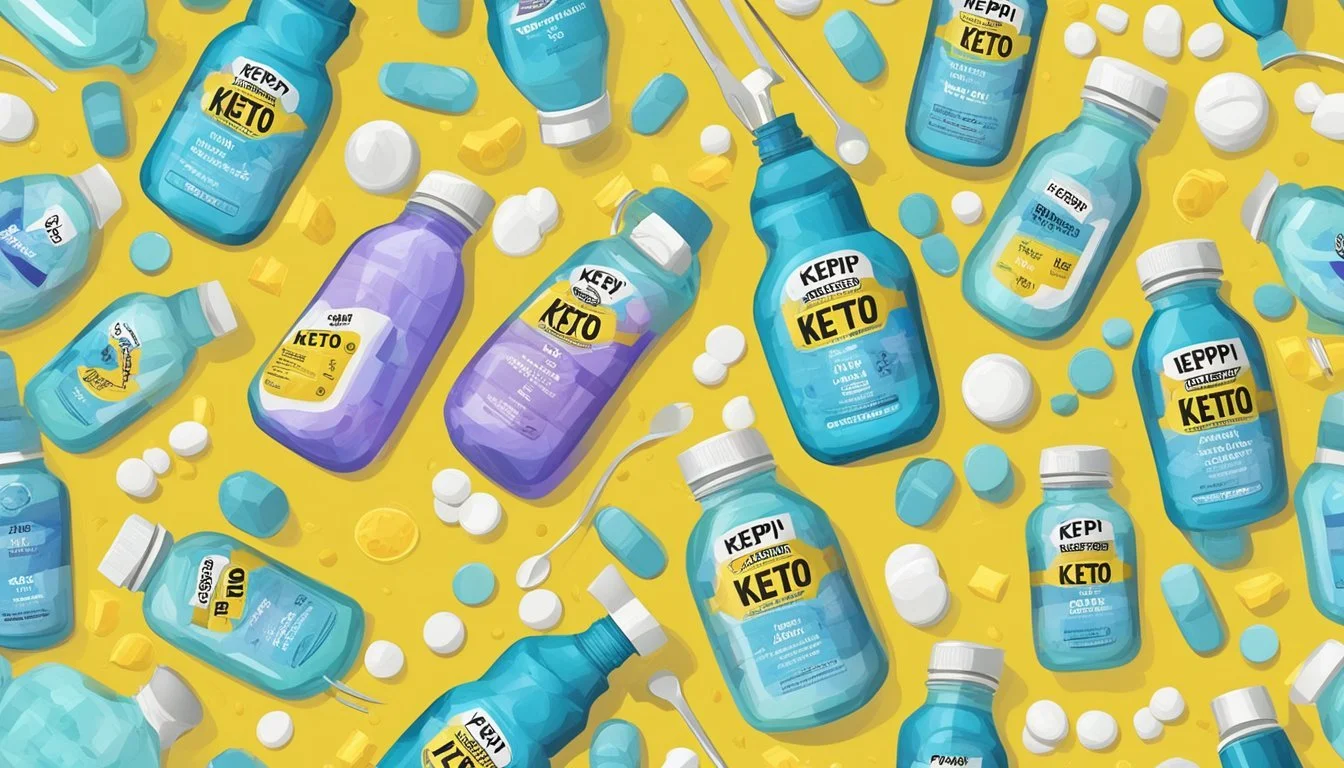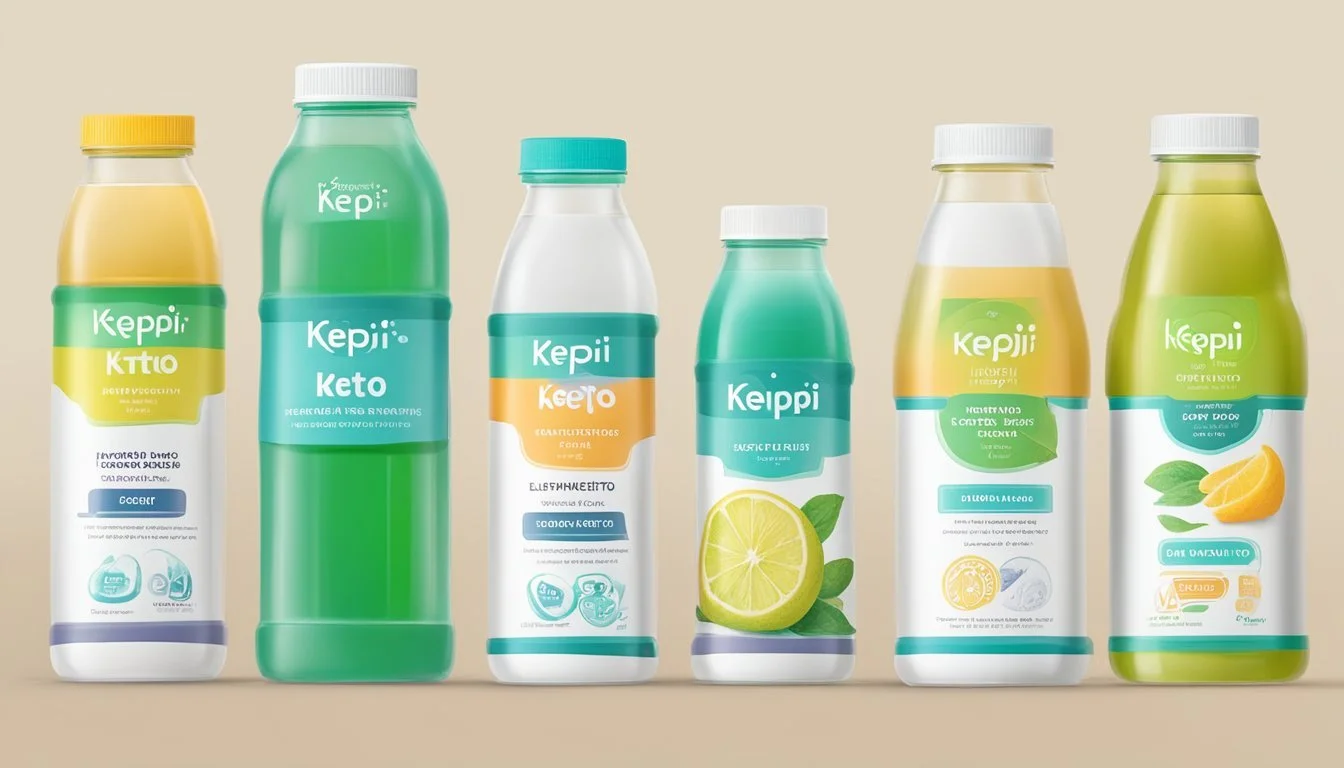How Many Servings of Keppi Keto Electrolytes Is Too Much
Expert Guidelines
Navigating the world of electrolytes is crucial for anyone on a ketogenic diet. Electrolytes like sodium, potassium, and magnesium are vital for maintaining hydration and overall health. Keppi Keto Electrolytes Powder offers an efficient way to supplement these minerals, especially when your diet lacks sufficient amounts.
While beneficial, it’s important to know how much Keppi Keto Electrolytes Powder is too much. Consuming excessive servings can lead to adverse effects such as nausea or diarrhea. Typically, one serving per day is sufficient for most individuals, but those with active lifestyles might need more. Always consider your dietary intake and consult a healthcare provider if unsure.
Maintaining the right balance ensures you get the benefits without overdoing it. Each person’s needs vary, but moderation is key to achieving optimal hydration and performance on a ketogenic diet.
Understanding Electrolytes and Their Importance
Electrolytes are essential for various bodily functions and maintaining overall health. They play crucial roles in hydration, muscle contractions, and nerve function, which are particularly important when following a ketogenic diet.
Role of Electrolytes in the Body
Electrolytes are minerals that carry an electric charge. They are vital for basic bodily functions, including nerve signaling and muscle contractions. Key electrolytes include sodium, potassium, magnesium, chloride, and calcium.
These minerals help maintain fluid balance and regulate blood pressure, ensuring that the body's cells are adequately hydrated. Sodium and potassium are particularly crucial for nerve function and muscle contractions. Magnesium is involved in over 300 enzymatic reactions in the body, affecting everything from energy production to protein synthesis.
Electrolytes also play a role in removing waste products from cells and transporting nutrients into cells. Without a proper balance, symptoms like fatigue, muscle cramps, and even more severe conditions can occur.
Electrolytes on a Ketogenic Diet
On a ketogenic diet, the body switches from burning carbs to fats, leading to increased water and electrolyte excretion. This can cause an imbalance known as keto flu, characterized by headaches, fatigue, and muscle cramps.
Maintaining adequate levels of electrolytes is crucial when on a low-carb or keto diet. Sodium, potassium, and magnesium are the most commonly needed supplements. Sodium helps balance fluid levels, while potassium and magnesium are vital for maintaining nerve and muscle function.
Chloride works with sodium to support fluid balance. Calcium is essential for bone health and muscle function. Insufficient electrolyte intake can disrupt glycogen stores, making it harder to sustain ketosis.
Adequate electrolyte consumption can alleviate common keto-side effects, ensuring improved hydration and metabolic functions, and supporting overall health during the ketogenic journey.
Optimal Electrolyte Intake for Ketogenic Diet Followers
Achieving the right balance of electrolytes is critical for those on a ketogenic diet to prevent symptoms like muscle weakness, cramping, and headaches. Specific guidelines ensure individuals meet daily intake recommendations effectively.
How Much Is Enough
Sodium: Those on a keto diet should consume between 3,000 to 5,000 mg of sodium daily. This higher intake is necessary due to increased water excretion and sodium loss when the body is in ketosis.
Potassium: The recommended daily intake of potassium ranges from 2,600 to 3,400 mg. Potassium is vital for nerve function and muscle contraction, reducing risks of cramps and weakness.
Magnesium: Ketogenic dieters should aim for 320 to 420 mg of magnesium per day. Adequate magnesium levels help prevent muscle cramps and support overall energy production.
Hydration: Besides electrolyte supplements, maintaining appropriate water intake is equally important. Hydrating adequately ensures the proper functioning of electrolytes and aids in avoiding dizziness and headaches.
Recognizing Signs of Electrolyte Imbalances
Muscle Weakness and Cramping: These symptoms can indicate low levels of potassium or magnesium. Increasing intake through supplements or dietary sources can help alleviate these issues.
Headaches and Dizziness: Insufficient sodium and hydration often cause these symptoms. Keto followers should monitor their sodium intake and drink enough water to prevent dehydration.
Heart Palpitations and Arrhythmia: These can result from significant electrolyte imbalances. Ensuring balanced levels of sodium, potassium, and magnesium can help maintain normal heart function.
By understanding optimal daily intake and recognizing symptoms of imbalances, keto dieters can manage their electrolyte levels effectively to maintain overall well-being.
Risks of Excessive Electrolyte Consumption
Consuming an excessive amount of Keppi Keto Electrolytes or any electrolyte supplements can pose significant health risks. Key concerns involve immediate side effects and potential long-term impacts on major bodily systems.
Identifying Overconsumption
Taking too much of electrolyte supplements such as Keppi Keto can lead to an electrolyte imbalance. Symptoms of overconsumption include nausea, fatigue, and muscle cramping. Extreme cases may result in more severe conditions like confusion, irritability, and heart arrhythmias.
Electrolyte levels, particularly sodium, can significantly influence hydration and blood pressure. High doses may cause dehydration and increased blood pressure. It’s crucial to monitor intake to avoid these adverse effects. Individuals should be aware of how much they are ingesting relative to their body's needs.
Long-Term Health Concerns
Long-term excessive consumption of electrolytes can lead to chronic health problems. Overuse of sodium may contribute to hypertension, increasing the risk of heart disease. The kidneys, responsible for filtering electrolytes, can also suffer, potentially leading to kidney disease.
High blood pressure and associated conditions such as heart failure are significant risks. Beyond sodium, imbalances in other electrolytes like potassium and magnesium may also disrupt bodily functions. This disruption can lead to complications like constipation or diarrhea, affecting digestive health and overall well-being.
Monitoring and managing electrolyte intake is crucial to prevent these long-term issues, especially for those with pre-existing health conditions.
Sources of Electrolytes
Understanding where to find electrolytes is crucial for maintaining electrolyte balance, especially on a keto diet. This section will cover the significant food sources and supplemental alternatives that can help meet electrolyte needs.
Food Sources
Electrolytes can be found in a variety of foods. Avocado and spinach are excellent sources of potassium. Salmon and other fatty fish contribute to magnesium intake. Leafy greens like swiss chard and broccoli provide multiple electrolytes including potassium and magnesium.
Nuts and seeds, such as chia seeds and hemp seeds, are rich in magnesium and are easy to include in a diet. Pumpkin seeds are particularly noted for their high magnesium content. Dairy products like yogurt and cheese offer calcium. Meat and chicken supply sodium and phosphate.
Fruits like bananas are known for potassium, though they may be limited on keto. Mushrooms and brussels sprouts are also good sources of minerals.
Supplemental Sources and Alternatives
For those who struggle to get enough electrolytes from food, supplements are an effective alternative. Electrolyte supplements often come in powders or tablets and are designed to quickly replenish sodium, potassium, magnesium, and calcium. Keppi Keto Electrolytes Powder is an example that is easy to use.
Potassium supplements and magnesium glycinate are commonly used to address deficiencies. Salt and sea salt are essential for sodium intake. Bone broth is a popular keto-friendly option providing various minerals.
Exogenous ketones are often combined with electrolytes in supplements to aid ketosis. For a low-carb sweetener, stevia can be used without impacting electrolytes. Finally, while beneficial, it’s crucial to monitor intake to avoid excess, which can lead to adverse effects.
Proper Hydration Techniques
Proper hydration is essential for maintaining peak performance and preventing issues like muscle cramps or fatigue. Key components include balancing water and electrolyte intake, especially crucial for athletes.
Balancing Water and Electrolyte Intake
Balancing water and electrolyte intake involves ensuring adequate levels of sodium, potassium, and magnesium. Overhydration without proper electrolyte balance can lead to diluted blood sodium levels, causing hyponatremia.
Signs of electrolyte imbalance:
Muscle cramps
Dizziness
Irregular heartbeat
Tips for proper balance:
Drink water consistently, but not excessively.
Use electrolyte supplements, such as Keppi Keto Electrolytes Powder, to maintain sodium, potassium, and magnesium levels.
Monitor urine color: light yellow indicates proper hydration; dark yellow suggests dehydration.
Hydration for Athletes
Athletes need to focus on both water and electrolyte intake to compensate for loss through sweat. Proper hydration strategies can enhance performance and recovery.
Key strategies:
Pre-hydrate: Consume water and electrolytes before intense activities.
During exercise: Take regular sips of water and use electrolyte supplements to replace lost minerals.
Post-exercise: Rehydrate with water and electrolytes within two hours to speed up recovery.
Recommendations:
Weigh before and after exercise to assess fluid loss.
Replenish fluids by drinking 16-24 ounces of water for every pound lost.
Use products like Keppi Keto Electrolytes Powder for balanced electrolyte restoration.
Monitoring and Adjusting Electrolyte Intake
Properly managing electrolyte intake is crucial for those on a ketogenic or low-carb diet. This involves both careful tracking and making adjustments based on specific symptoms and activity levels.
Tracking Daily Intake
Tracking daily electrolyte consumption helps identify if the intake is within the recommended range. Commonly needed electrolytes include sodium, potassium, magnesium, and calcium. Using dietary logs can help monitor the intake of these nutrients.
Individuals on a ketogenic diet should aim to adjust their electrolyte levels based on tailored guidelines, often surpassing typical dietary recommendations. For example, a target might be 2,000 to 4,700 mg of potassium per day, along with increased sodium intake to combat losses through urine due to decreased carb intake. Consistent tracking prevents deficiencies that could potentially lead to issues such as dehydration, cramps, and fatigue.
Adjusting Intake Based on Symptoms and Activity
Electrolyte needs can vary widely depending on activity levels and symptoms. Common signs of low electrolyte levels include muscle cramps, headaches, and general fatigue. If such symptoms appear, it's crucial to adjust the intake of specific electrolytes accordingly.
Hydration also plays a pivotal role; drinking 8-10 cups of water daily supports overall electrolyte balance. Those experiencing symptoms like weakness or muscle cramps may need to increase their intake of magnesium or sodium. Regular physical activity, especially intense exercise, can lead to greater electrolyte depletion, necessitating more rigorous monitoring and adjustments to ensure optimal health and diet effectiveness.
Potential Side Effects and How to Mitigate Them
Excessive intake of Keppi Keto Electrolytes can lead to various side effects. Knowing the symptoms and ways to manage them is essential for maintaining a healthy balance and ensuring safety.
Common Side Effects of Excessive Intake
Nausea and Vomiting: Overconsumption of electrolytes might result in gastrointestinal issues, such as nausea and vomiting. These symptoms can be distressing and counterproductive to hydration goals.
Diarrhea and Constipation: Taking too many electrolyte supplements can disrupt bowel movements. Excessive intake may lead to diarrhea, whereas imbalanced electrolytes might cause constipation.
High Blood Pressure and Dizziness: Too much sodium or potassium from added electrolytes can affect blood pressure levels, leading to high blood pressure and associated symptoms like dizziness.
Increased Thirst and Restlessness: An imbalanced intake of electrolytes can result in sensations of increased thirst and feelings of restlessness, which can be uncomfortable and disruptive.
Mitigating Adverse Effects
Hydration Management: It's crucial to monitor hydration levels. Drinking adequate water alongside electrolytes can help maintain balance and reduce the risk of negative symptoms.
Dietary Adjustments: Incorporating natural sources of electrolytes, such as fruits and vegetables, can provide a balanced intake. This helps in achieving the necessary electrolyte levels without overloading the system.
Doctor Consultation: If symptoms such as nausea, vomiting, or high blood pressure persist, consulting a healthcare provider is essential. They can provide personalized advice and adjust the dosage as necessary.
Controlled Intake: Follow the recommended servings on the product label. Avoid self-prescribing high doses to prevent the adverse effects associated with overconsumption.
Using these strategies will help in mitigating the side effects while maintaining the benefits of electrolyte supplementation effectively.
Key Takeaways for Optimal Electrolyte Balance
Maintaining the right electrolyte balance is crucial, especially on a ketogenic diet where fluid and electrolyte levels can fluctuate.
Electrolytes such as sodium, potassium, magnesium, and calcium play vital roles in the body. They help with muscle function, nerve signaling, and maintaining fluid balance.
Hydration is equally important. Drinking at least 8-10 cups of water daily ensures that electrolyte levels stay balanced.
Electrolyte supplements can fill dietary gaps. High-quality supplements are available. Always follow the recommended dosages to avoid any potential negative effects.
Natural foods rich in electrolytes are also essential. Avocados, spinach, salmon, and seeds are excellent choices. These foods provide potassium, magnesium, and other critical nutrients.
Signs of imbalance include headaches, muscle cramps, and fatigue. These symptoms can indicate the need to adjust your electrolyte intake or hydration.
Monitoring** daily intake** helps maintain balance. Aim for 2,000 mg to 4,700 mg of potassium daily. Also, keep track of other essential electrolytes.
Incorporate a variety of food sources and supplements to cover all bases. This approach supports overall health and keto compliance.
Always listen to your body's signals. Adjustments might be necessary based on activity levels, weather, and individual needs.








